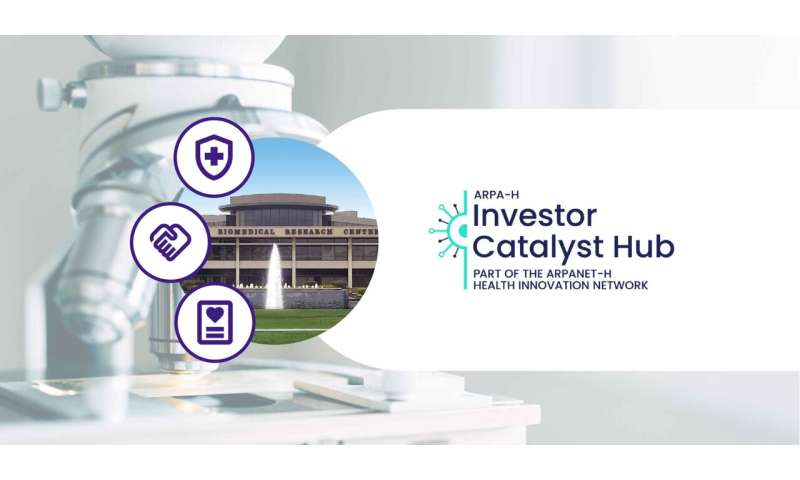Pennington Biomedical Research Center Named a Spoke in the ARPA-H Investor Catalyst Hub

Shortly after being selected as a spoke in the ARPA-H Customer Experience Hub, the Pennington Biomedical Research Center has also been named a spoke in the ARPA-H Investor Catalyst Hub.
The Advanced Research Projects Agency for Health, or ARPA-H, headquartered in the Department of Health and Human Services in Washington, D.C., operates regional hubs: the Investor Catalyst Hub based in the Greater Boston area, the Customer Experience Hub in Dallas, and the Stakeholder and Operations Hub in the National Capital Region. These three regional hubs comprise ARPANET-H – a nationwide health innovation network dedicated to the needs of people: listening to, learning from, and building trust with communities to enable access to critical health innovations for all Americans.
The Investor Catalyst Hub connects researchers, entrepreneurs and investors to accelerate the development of innovative healthcare solutions. This hub will facilitate novel research findings and future-forward ideas to advance commercialization, affordability and revolutionary breakthroughs to achieve improved health outcomes for all Americans.
"It is vitally important that we are not only researching important health and wellness breakthroughs, but we are finding ways to quickly get those breakthroughs directly to the people who urgently need them," Pennington Biomedical Executive Director Dr. John Kirwan said. "Being named a spoke in the Investor Relations Hub connects our research with entrepreneurs, investors, government agencies and academia in ways that will further accelerate the development of novel and innovative healthcare solutions."
The Investor Catalyst Hub has been set up to scale health research and venture investment ecosystem capabilities, disrupt traditional care models, create new delivery pathways, and help performers bring game-changing solutions to market to solve big problems in health.
The benefits of being named a spoke in the Investor Catalyst Hub include:
Eligible to apply for funding to support Investor Catalyst activities, projects, immersive experiences, and initiatives;
Flexible contracting vehicles, resulting in award execution significantly faster than traditional government contracts;
Networking opportunities with consortium members, government, and other strategic stakeholders at annual membership meetings, conferences, and forums;
Ability to provide feedback and input into ARPA-H challenge areas, problem identification, and priorities;
Access and the opportunity to contribute to an open library of resources and public goods that draw on the insights from ARPANET-H activities.
The Investor Catalyst Hub currently includes 180 members, and Pennington Biomedical is among the first members from Louisiana.
"By being a part of both the ARPA-H Customer Experience Hub and Investor Catalyst Hub, Pennington Biomedical is connected to hundreds of organizations across the country working for the same goals of improving health across the lifespan," Dr. Kirwan said. "Being selected for both hubs is a unique achievement, and our faculty and staff are excited and ready to contribute to this important network."
For more information about the Investor Catalyst Hub and its initiatives, visit https://investorcatalysthub.org/.
About the Pennington Biomedical Research Center
The Pennington Biomedical Research Center is at the forefront of medical discovery as it relates to understanding the triggers of obesity, diabetes, cardiovascular disease, cancer and dementia. The Center conducts basic, clinical, and population research, and is a campus of the LSU System. The research enterprise at Pennington Biomedical includes over 530 employees within a network of 44 clinics and research laboratories, and 13 highly specialized core service facilities. Its scientists and physician/scientists are supported by research trainees, lab technicians, nurses, dietitians, and other support personnel. Pennington Biomedical is a state-of-the-art research facility on a 222-acre campus in Baton Rouge. For more information, see www.pbrc.edu.
Provided by Louisiana State University